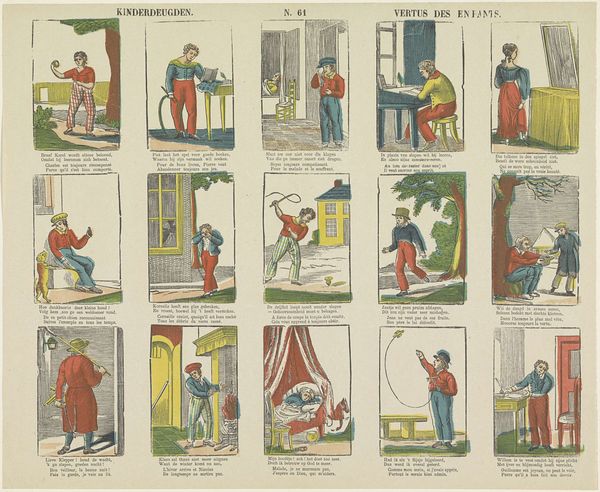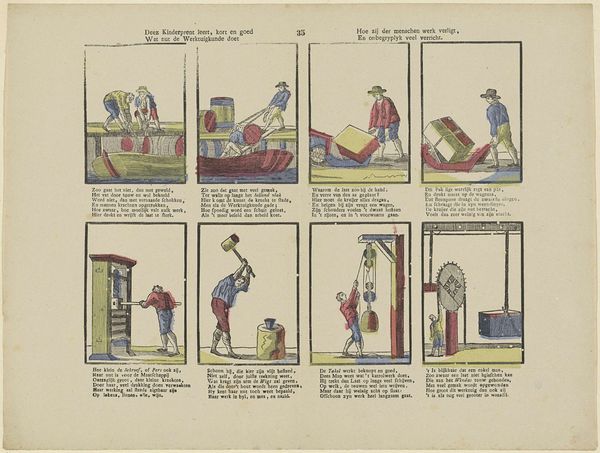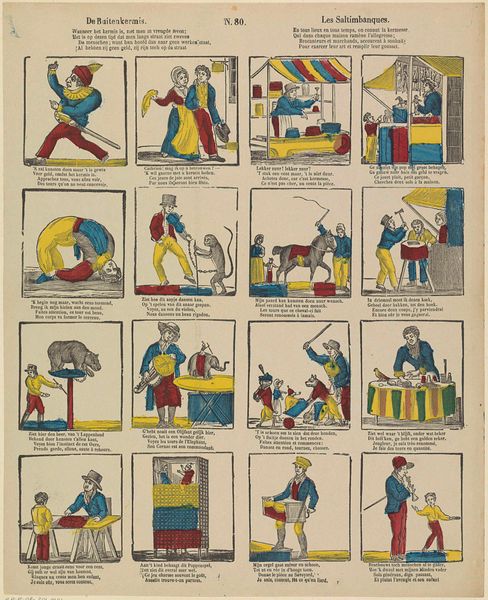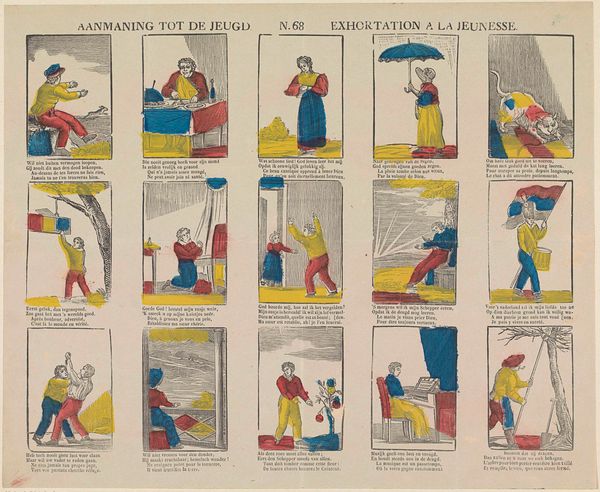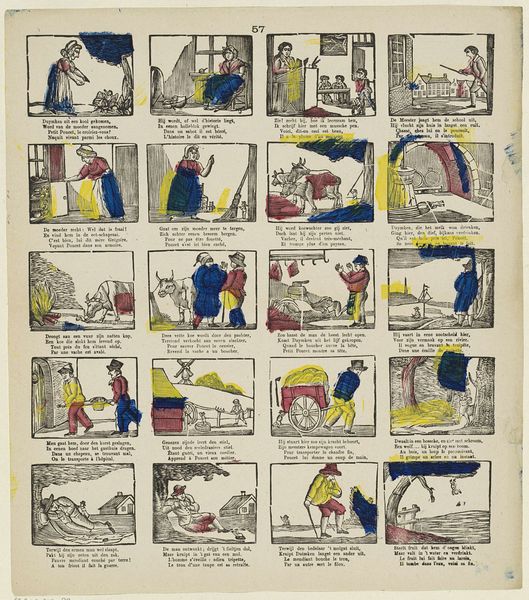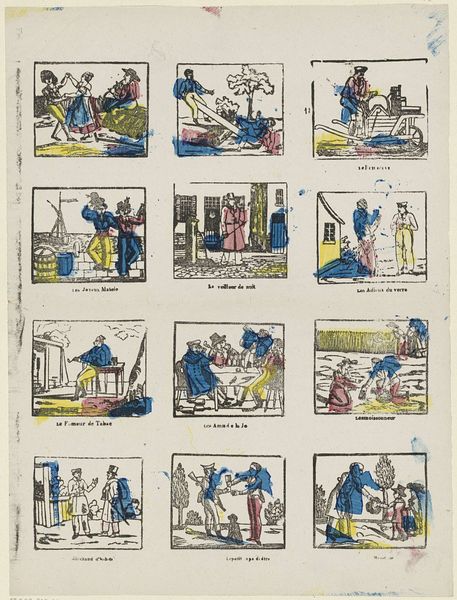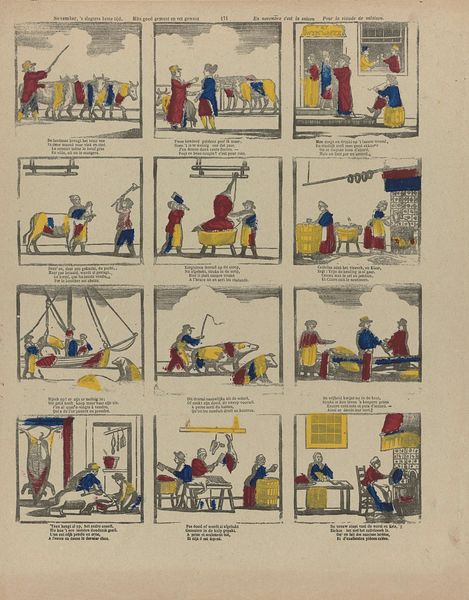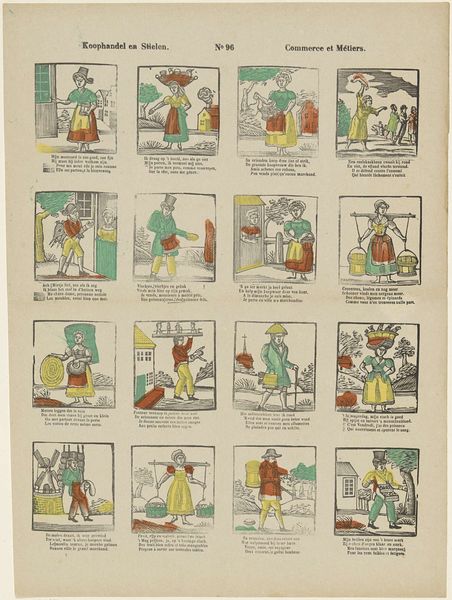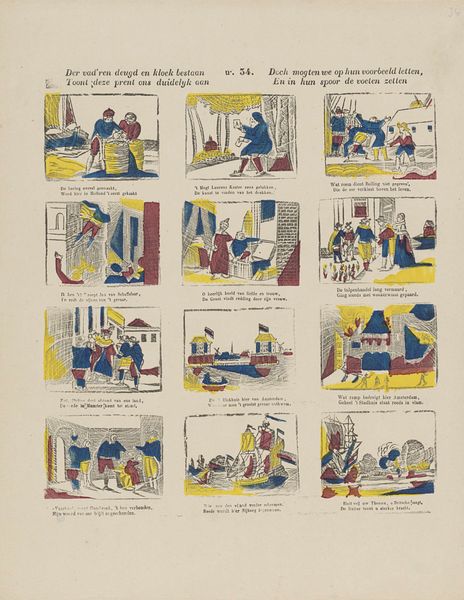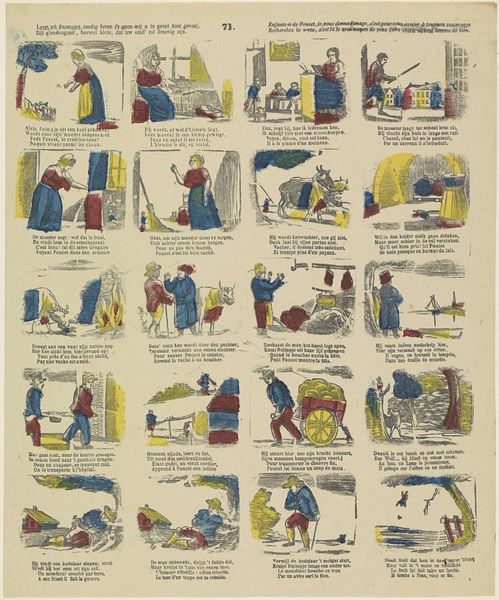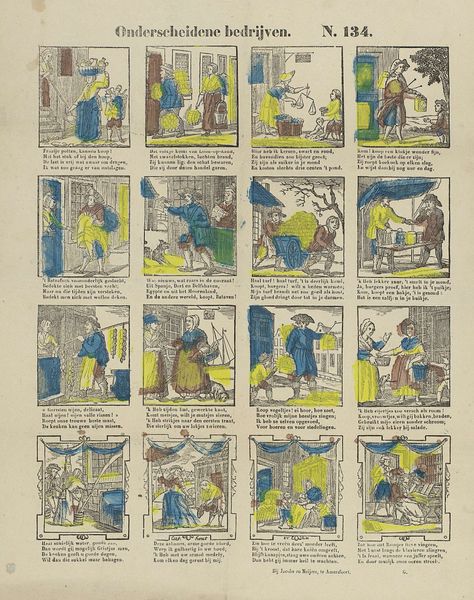
drawing, print, engraving
#
drawing
#
narrative-art
# print
#
watercolour illustration
#
genre-painting
#
history-painting
#
academic-art
#
early-renaissance
#
engraving
#
miniature
Dimensions: height 310 mm, width 381 mm
Copyright: Rijks Museum: Open Domain
Curator: Let's discuss this intriguing print entitled "Kinderdeugden / Vertus des Enfants," which translates to "Children's Virtues," dating from somewhere between 1800 and 1833. Editor: My first impression is how blocky the images are, quite striking actually. The limited color palette gives it a rather archaic feel. There are lots of small narrative scenes… Curator: Indeed. This print showcases various scenes, seemingly depicting the proper behaviors expected of children during that era. It’s fascinating how social expectations are visually encoded. Note the emphasis on education and obedience in each individual frame, the composition directing how children were actively being shaped. Editor: You're right. The color usage too-- primarily blues and reds-- adds an element of severity. The stiffness of the figures and the way each is set apart within their little square emphasizes discipline and control over the image itself. Semiotically speaking, the image makes one wonder whether those children feel free or constricted within their frames? Curator: It really makes you consider the role prints like these played in disseminating specific societal values to its audience. Its historical importance is clear; such art shows how moral education was imparted through visual media. One is reminded that virtue can mean so many different things for so many different reasons through changing times. Editor: Yes, but on another note: in that little panel down there of the child napping, the arching design of the drapery creates a fascinating curve mirroring the form of the sleeping boy; such contrast lends rhythm. But given our subject, rhythm and its aesthetic properties probably weren't part of the social contract… Curator: A valuable formal consideration. Overall, analyzing “Children's Virtues” through its historical context gives us considerable insight on the period and its principles on child rearing. Editor: Exactly; and its formal elements further bolster this socio-historical reading while being valuable visual indicators by themselves.
Comments
No comments
Be the first to comment and join the conversation on the ultimate creative platform.

